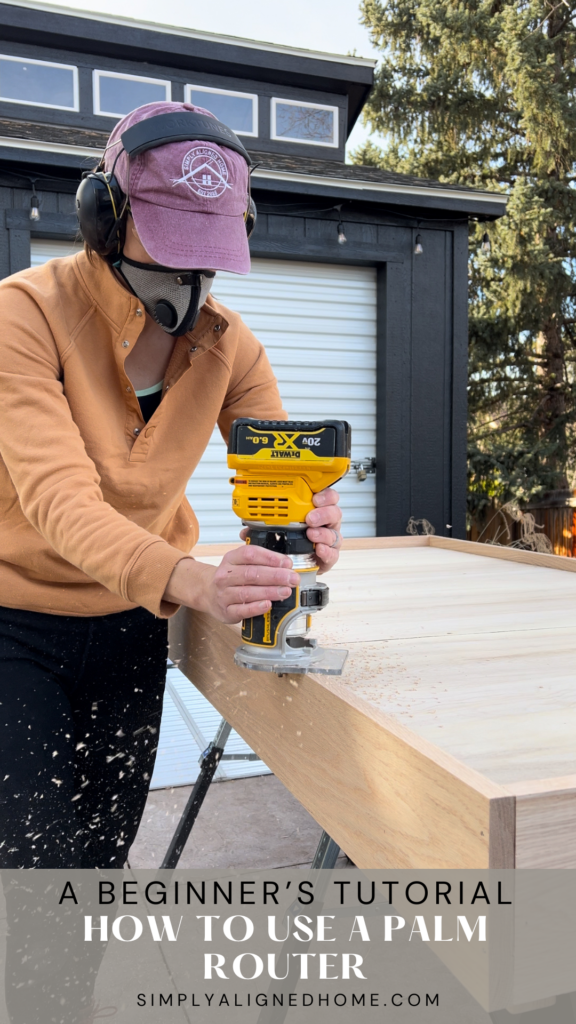In this article, we discuss a beginner’s tutorial of how to use a palm router.
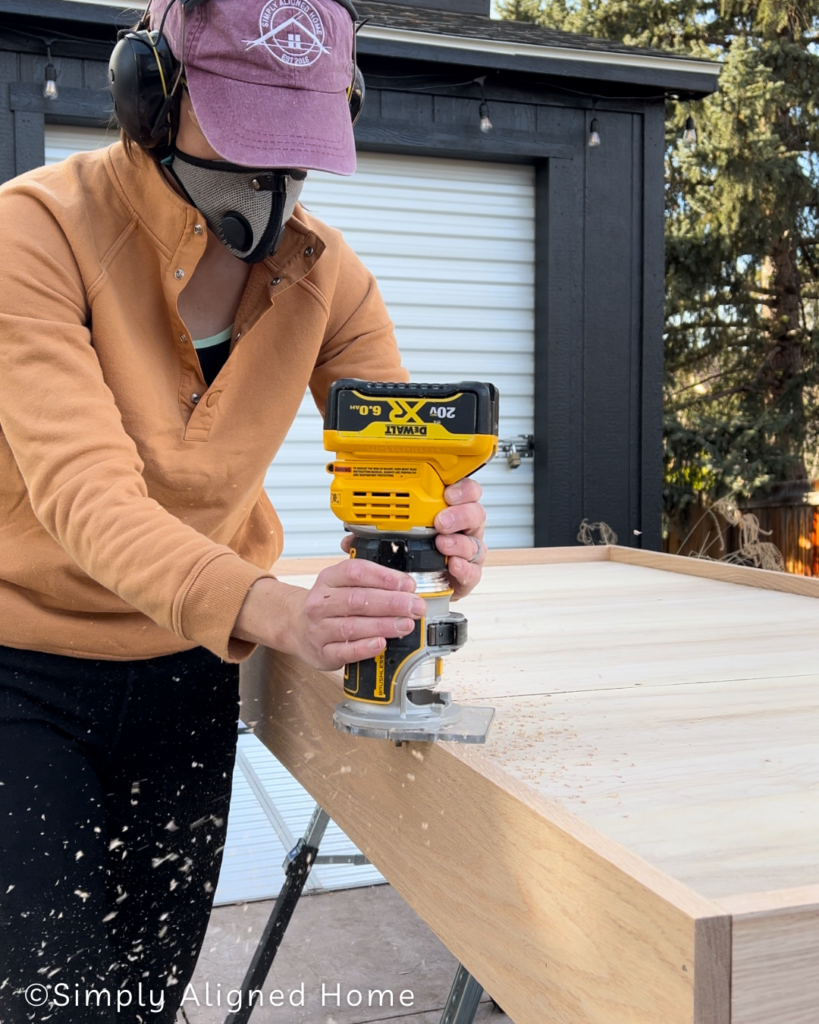
Out of all the tools I use for building and designing my projects, I just love my palm router! I wouldn’t consider it a must have for beginners but when someone is looking to up there DIY game, it’s the first one I suggest!
A palm router is just a smaller version of a trim router. Whether you are adding decorative trim to bookshelves or you need it to help you cut out grooves and dados, the palm router is a versatile tool!
If you have ever considered using a palm router, this article is for you! I have compiled a list of practical uses for a palm router and I cover important safety precautions to consider when operating one! Along with guidelines on how to properly use it.
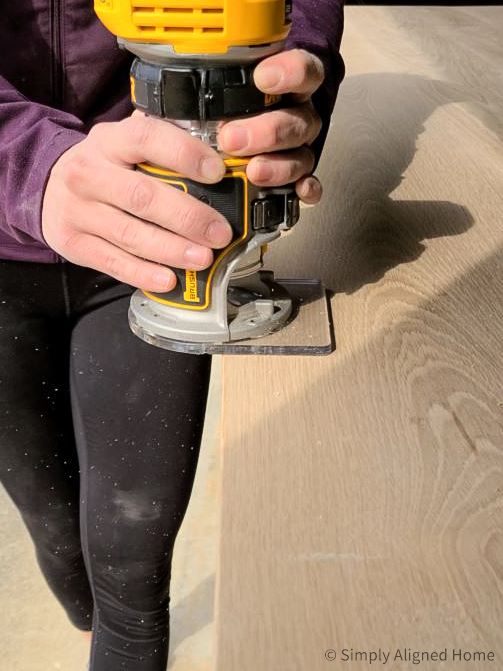
**This post contains affiliate links to products that I used or recommend. If you purchase something through an affiliate link, I may receive a small percentage of the sale at no extra cost to you. I really appreciate your support!**
Palm Router Basics
What Is A Palm Router?
A palm router, also known as a trim router, is small lightweight handheld power tool designed for routing tasks. Routing involves hollowing out an area or shaping the edges of wood. A palm router is a compact version of a standard router, making it easier to handle and control.
What Are Some Common Uses Of A Palm Router?
- Edge Profiling: Palm routers are often used for shaping and profiling the edges of wood boards. They can create decorative edges to give a finished look to furniture or other wood projects.
- Cutting Grooves and Dados: Palm routers are suitable for cutting grooves, dados, or rabbets in wood. This is useful for joinery work, such as creating channels for drawer slides or assembling wood doors.
- Routing Holes: Palm routers equipped with the appropriate bit, can be used to route holes of various shapes and sizes. This is useful for tasks like cutting out openings for electrical outlets or creating custom openings in drywall or plywood.
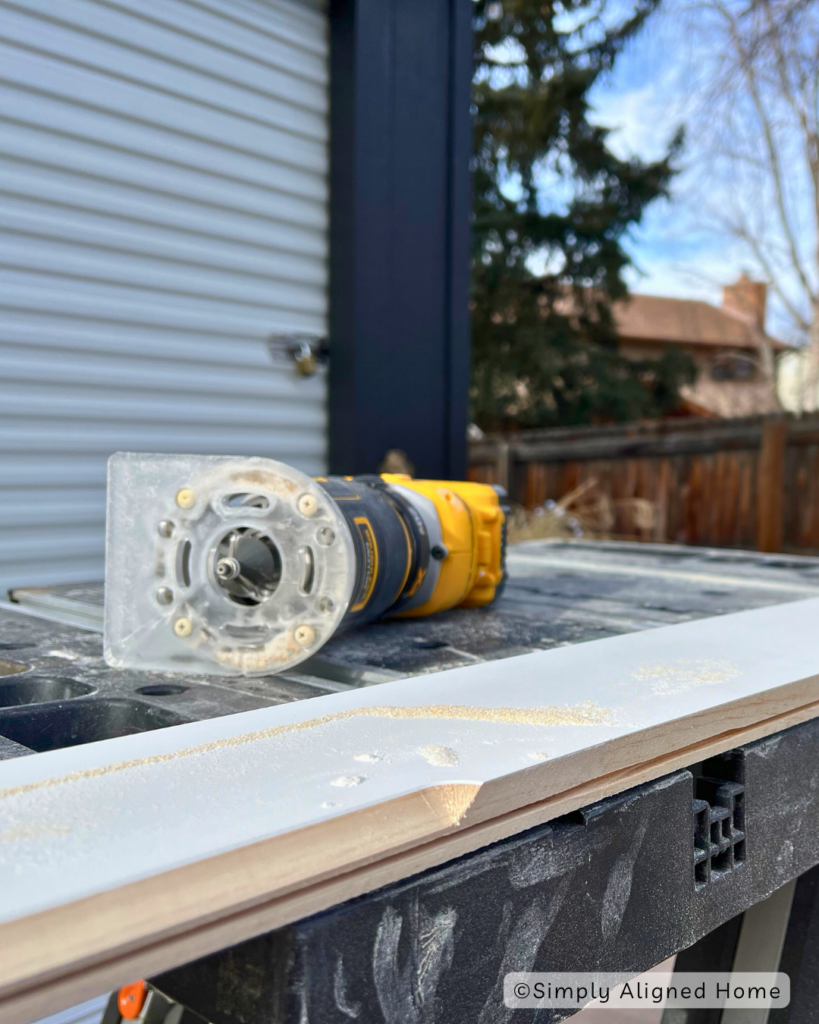
Palm Router Safety Precautions
When working with power tools of any type it’s important to wear appropriate protective gear. Always wear safety glasses to protect your eyes from flying wood chips and dust while using a palm router. Another one I always suggest is to make sure you are wearing ear protection! Power tools in general can be pretty loud, and can damage hearing during prolonged use.
Lastly, when working with wood or mdf wear a dust mask or respirator to protect your lungs from dust and inhaling fine particles. Routers do tend to create a lot of dust when cutting.
Secure Your Workpiece Before Using A Router
When you go to start your project and you’re using a palm router, the first thing you want to do is make sure your workpiece is secure.
- Clamping: Securely clamp the workpiece to a stable surface, such as a workbench, to prevent it from moving during the routing process. This ensures accuracy and reduces the risk of the material slipping or being pulled out of your hands.
- Stable Footing: Make sure you have stable footing while operating the palm router. Avoid standing on an unstable surface that could lead to loss of balance. Keeping a clean working space is very important for safety!
Use The Correct Router Bits
There are tons of router bits out there. They can be used for a lot of different projects. Currently, I use a Ryobi bit set with my Dewalt palm router.
Some safety precautions to keep in mind when using a router and router bits are:
- Bit Selection: Choose the appropriate router bit for the specific task you are performing. Different bits are designed for various cuts, such as edge profiling, dado cutting, or hole routing. Using the wrong bit can result in poor results.
- Properly Installed Bits: Ensure that the router bits are secured and properly installed in the collet. Follow the manufacturer’s instructions for installing and tightening bits to prevent them from coming loose during operation.
- Depth Adjustment: Set the cutting depth of the router bit according to the requirements of your project. Adjust the depth with the router unplugged or without the battery installed to avoid accidental activation.
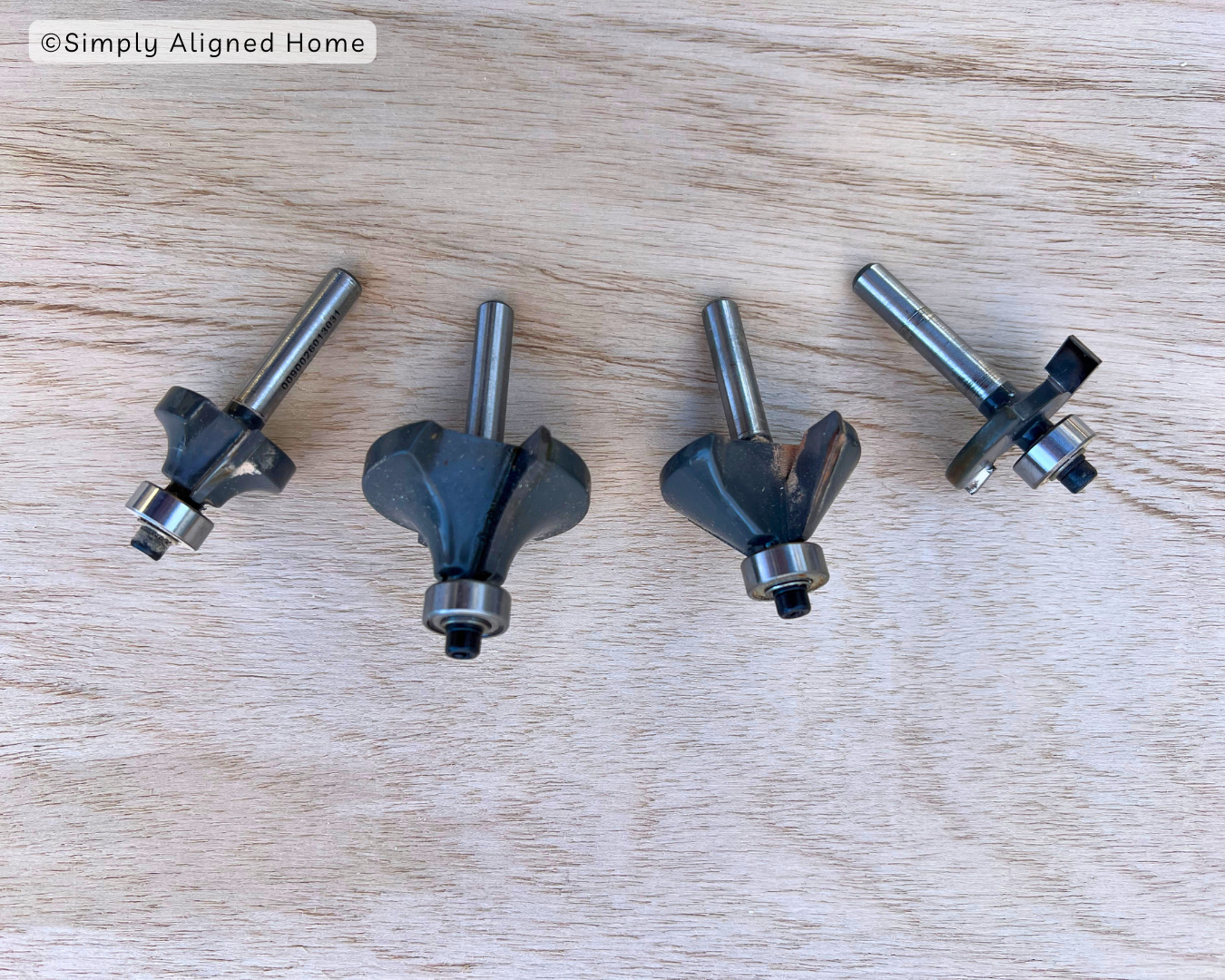
How To Use a Palm Router
When using a palm router for the first time, I always say practice makes perfect! Before you jump straight to your project get a scrap piece of wood and work on that until you are comfortable. If you can, make sure you practice with the same type of wood and use the exact bit you will be using for your project.
To use a palm router you are going to do these things:
- Clamp your workpiece down so it’s secure. (safety first)
- Make sure you have both hands on your router and always away from the bit!
- Just like with any saw, make sure the router is on before it touches the wood.
- Make sure you run your router in a counter clockwise direction. You want to go left to right when routing.
How Do You Adjust The Depth On A Palm Router?
To adjust the guard or depth of your router bit it’s pretty simple. I have the Dewalt Palm Router and with my exact model you will find a locking lever. Unlock that lever and then right above it you will see a micro-adjustment scale.
Just above that scale will be a depth adjustment ring. By rotating that ring you can change the depth up or down. Move the ring in whatever direction you need to until the bit just touches the workpiece. Once, you have that don’t forget to close the locking lever to secure the depth!
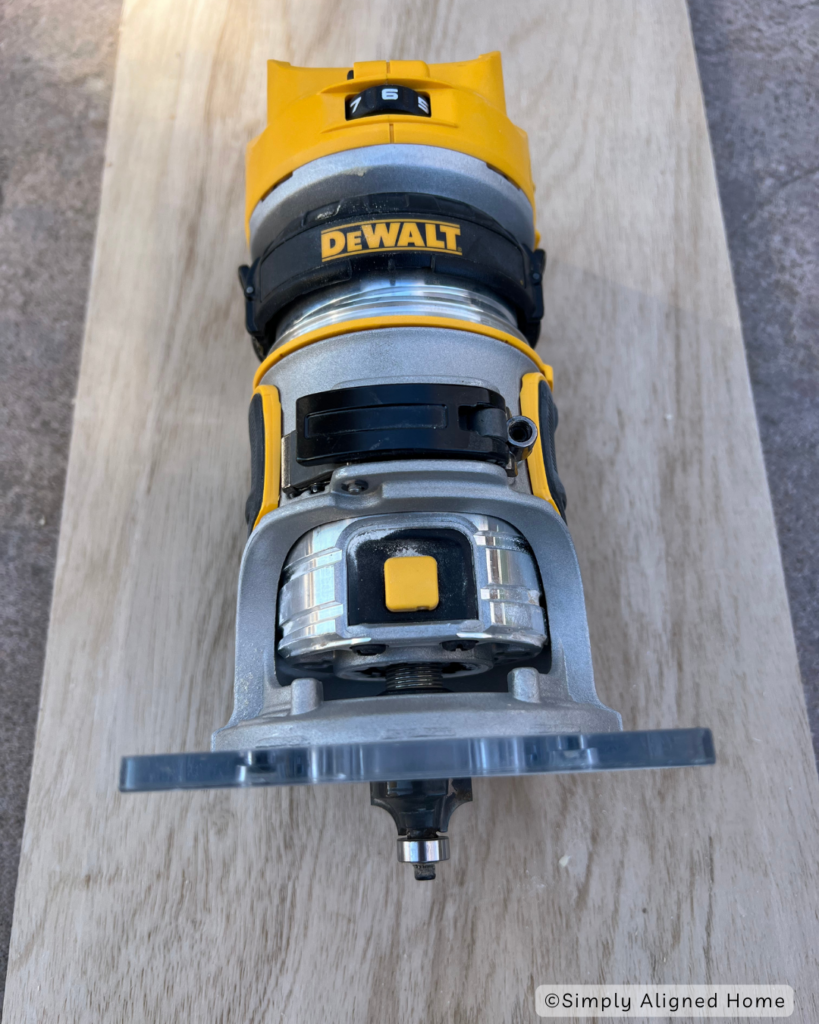
To make sure it’s at the depth you need I always suggest testing it on a scrap piece of wood first.
How To Choose The Correct Size Bit?
The most common width size for shanks on a router bit are 1/2 inch and 1/4 inch. 1/4 inch shanks are used for smaller routers, such as my palm router, and smaller edge work jobs. 1/2 inch shanks are used for more heavy-duty jobs and they offer better stability and overall performance.
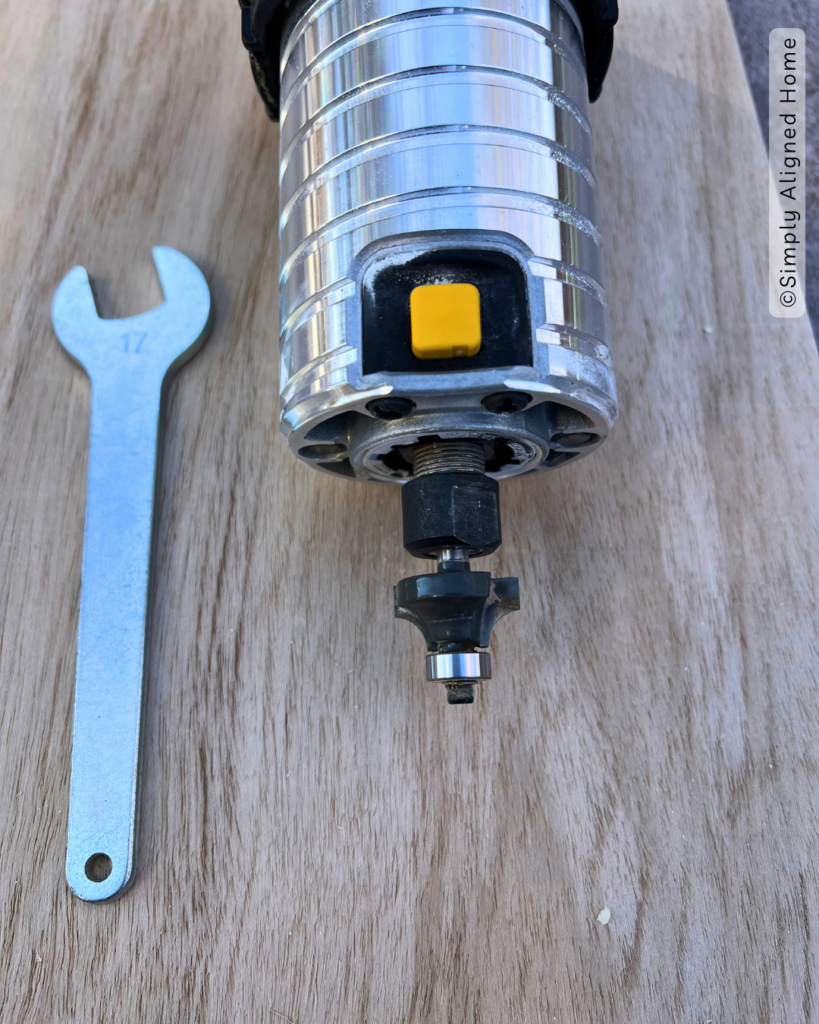
Aside from the shank size, it is important to ensure that the bit itself is not too large for the guide opening. Below is an example of a bit that is too large. The cutting edges of the bit are touching the plastic guide. This will cause the router to lock up when you go to turn it on. Instead, ensure that there is proper clearance between the cutting edges of the bit and the guide.
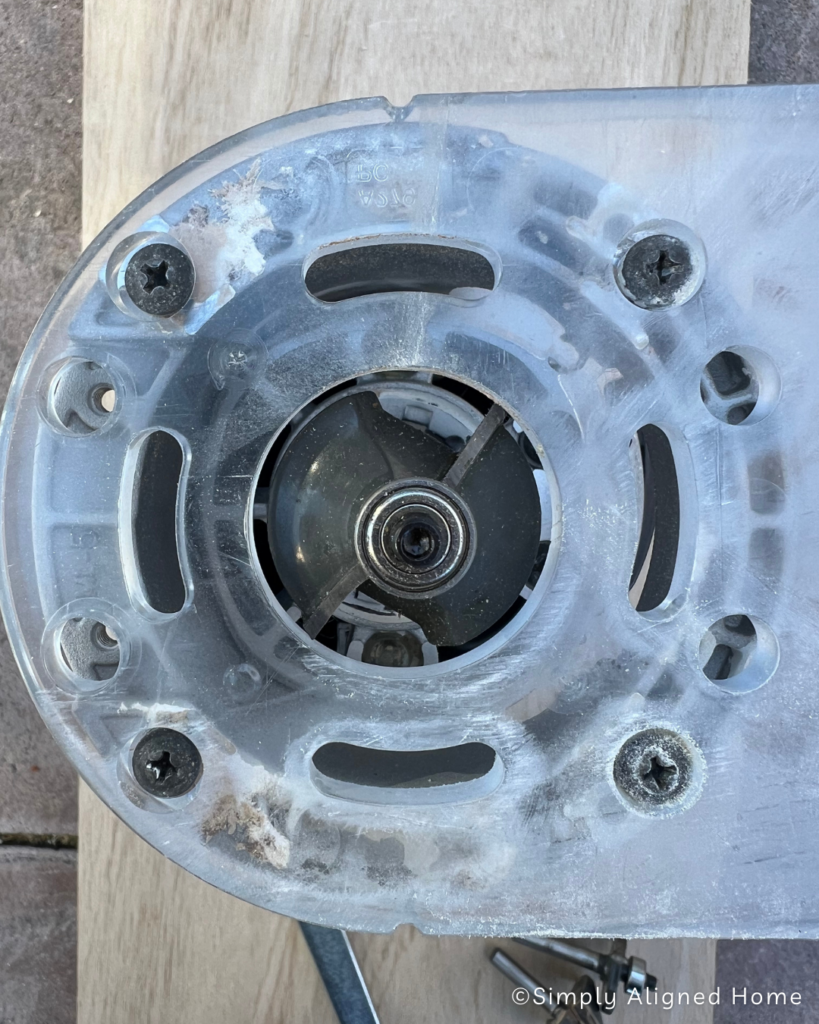
Some of the most used router bits that people reach for are:
- Straight bit: Used for rabbeting, tenons, inlays, box joints and dados. This is your most common bit.
- Rabbeting bit: Used to create identical rabbets for projects.
- Round-over bit: Used to create decorative edges.
- Chamfer bit: Used to make beveled edges.
I personally use this 24 piece router bit set from Ryobi! It has all the router bits I need and more.
Tips For Using A Palm Router
Lastly, I want to share some tips and tricks for handling a palm router! With time you too will figure out little things here and there that make routing easier.
Here are some that I have learned along the way:
- When routing a project it’s always best to cut slow and shallow. If you push your router over the wood to fast it could cause the bit to touch the wood fewer times per cutting pass. It will also give it a rough surface cut!
- When cutting shallow, you will have smoother results! It’s better to go over the path multiple times than just one time.
- To minimize splintering, start cutting on the end of the board.
Using a palm router can be fun and really increase the appearance and quality of your projects. I hope this helped you understand palm routers a little bit more! Happy routing!
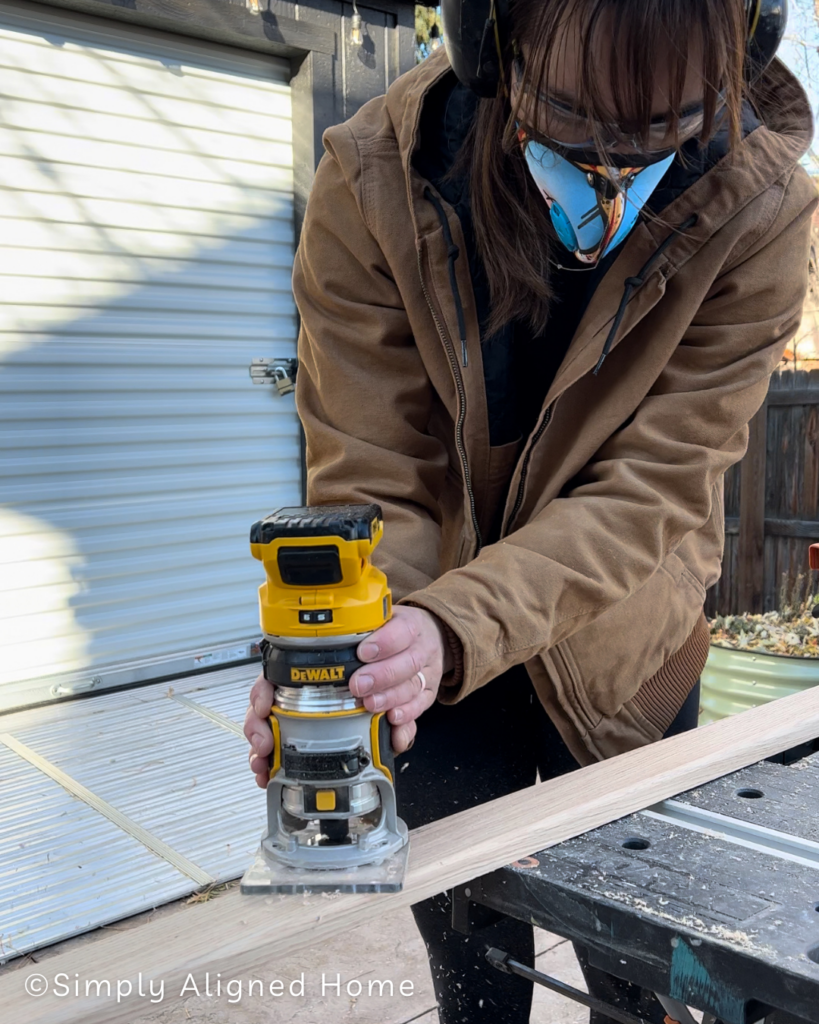

**Note: I am not a professional and do not claim to be an expert. Please be sure to always read instructions for all tools and products. Safety is very important and should be your top priority. Wear necessary protection when using tools (eye wear, hearing protection, gloves, etc.) and dust masks when sanding or cutting. Simply Aligned Home is not responsible for any injury or damage. All of my designs are not professionally designed and are for private use only.**
